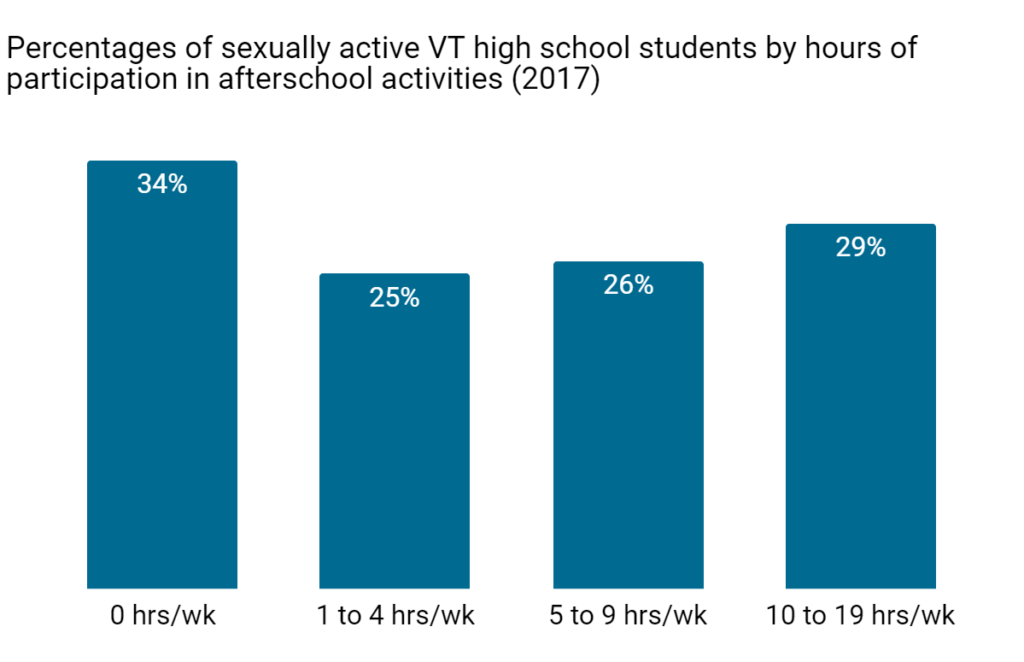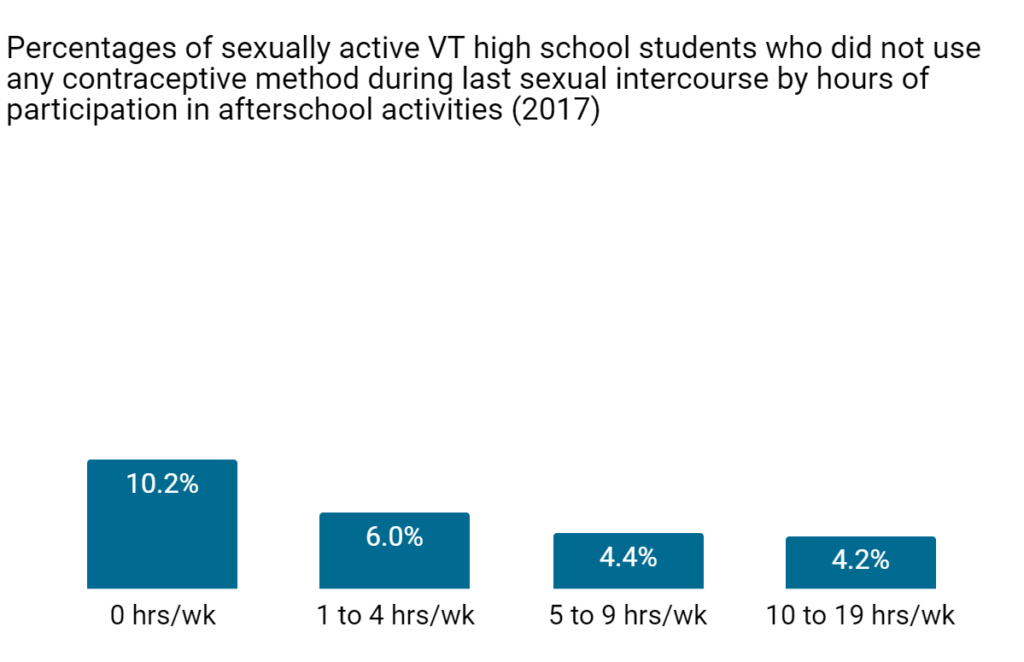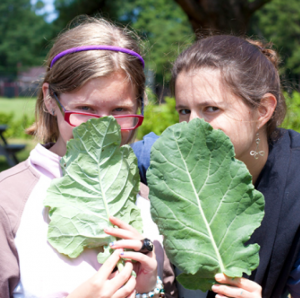Did you know that this month is the American Sexual Health Association’s National Condom Month? Happy February! And what does this have to do with afterschool? Glad you asked. Data from the 2017 Youth Risk Behavior Survey (YRBS) reveal that increased weekly participation in afterschool activities among Vermont youth are correlated with an increased likelihood that those who are sexually active youth will use protection. The data also show that increased participation in afterschool activities are linked with lower rates of sexual activity overall for youth in Vermont.
This isn’t surprising. We know from research that afterschool programs can play a positive role in reducing sexual activity among teenagers which naturally leads to fewer teen pregnancies. A December 2002 research article in Pediatrics reported that sexual behaviors among teens was less prevalent for those who were in supervised activities in the after-school hours. Among boys in particular, sexually transmitted diseases were less prevalent for the afterschool participants. Furthermore, a 2002 study of the Children’s Aid Society-Carrera program, a year-round afterschool program with a comprehensive youth development orientation in NYC showed that female program participants were significantly less likely to be sexually active and become pregnant than non-program participants. They also had significantly increased odds of having used a condoms and other forms of birth control.
In the spring of 2017 over 20,000 Vermont students in grades 9-12 took the YRBS. We were fortunate to have a question on the survey that asked youth to report the approximate number of hours that they participated in afterschool activities. There were also two questions related to sexual activity, the results of which we cross-tabulated with the results from our item about afterschool participation. The findings were encouraging: Afterschool participants were less likely to be sexually active than those who did not participate in such activities. Likewise, the percentage of sexually active youth who reported having unprotected sex decreased as their hours of participation in afterschool programming increased.
Here are the details of the findings: among youth that did not participate in any afterschool activities, 34% were sexually active (defined as those who had sex within the three months leading up to the survey). Among those who participated in between one and four hours, 25% were sexually active; among those who participated in between five and nine hours, 26% were sexually active; and among those who participated in between 10 and 19 hours, 29% were sexually active.

Youth who were sexually active responded to a question about whether they used a contraceptive during their most recent sexual encounter. Among students who did not participate in any afterschool programming, this rate was 10.2%. Among those who participated in between one and four hours, 6% did not use contraception; among those who participated in between five and nine hours, 4.4% did not and among those who participated in between 10 and 19 hours, 4.2% did not. It seems that youth in afterschool programming were compelled to make better and safer choices in regard to sexual activity.

In Vermont, on average, 7.2% of those who were sexually active reported that they did not use any method to prevent pregnancy during their last sexual intercourse. This was significantly lower than the national 2017 average of 13.8% of sexually active youth.
Once again, we are pleased to report that participation in afterschool activities among high school students in Vermont support lower instances of these youth engaging in risk behaviors.
Read past Data Digest blog posts here:
- Afterschool participation and opioid abuse (Jan. 2019)
- Afterschool participation and carrying weapons to school/school violence (Dec. 2018)
- Afterschool participation and connection with community (Nov. 2018)
- Afterschool participation and bullying (Oct. 2018)
- Afterschool participation and screen time/physical activity (Sept. 2018)
- Afterschool participation and academic performance (Aug. 2018)
- LGBT students and afterschool participation (July 2018)

